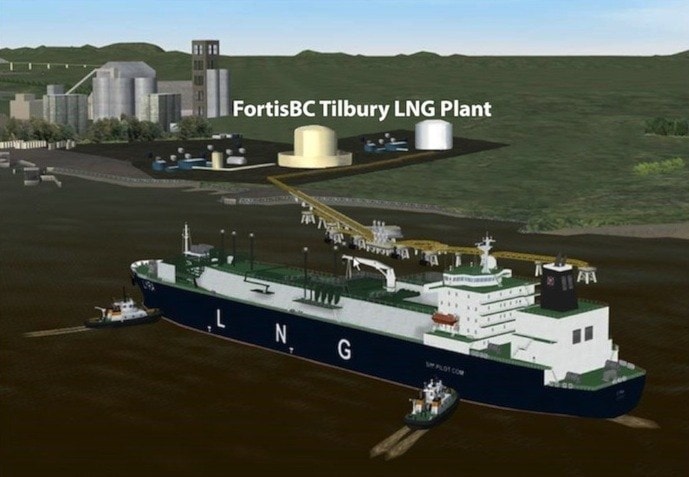The federal government has decided B.C. will lead the environmental assessment into the proposed WesPac Tilbury LNG jetty that would bring liquefied natural gas ships into the mouth of the Fraser River.
Friday's decision is a disappointment to environmental groups that distrust B.C.'s LNG-promoting provincial government and had hoped federal environmental regulators would conduct their own review of the project.
Federal environment minister Leona Aglukkaq's decision to allow B.C.'s Environmental Assessment Office to substitute for a federal review came a few days after a determination by the Canadian Environmental Assessment Agency that the WesPac project requires a federal assessment.
RELATED:Critics flag stricter U.S. rules on LNG tanker risks
The federal substitution order requires the province to assess environmental effects of marine shipping of LNG between the proposed jetty at Tilbury Island in Delta and Sand Heads at the entrance to the Strait of Georgia.
The review is also to include effects of malfunctions or accidents, cumulative environmental effects and potential mitigation measures.
The carriers loading at WesPac would go right past populated neighbouhoods in Ladner and Steveston – considerably closer than tankers expected to serve other proposed B.C. LNG terminals.
"B.C.'s now in charge of the process," said Kevin Washbrook, with the group Voters Taking Action on Climate Change.
"It sounds like because of public pressure there's a few more provisions than there would have been otherwise," he said. "It's a bit of a broader review, but it's still only one review, not both."
Senior governments say the substitution process – which has also been invoked for the proposed Woodfibre LNG plant near Squamish – avoids duplication and unnecessary cost.
The proposed $175-million WesPac docking facility would load supercooled LNG onto mid-sized tankers and barges for export from the adjacent FortisBC LNG plant, which is slated for a major $400-million expansion.
WesPac already has a licence from the National Energy Board to export 3.5 million tonnes of LNG per year and hopes to be in operation in 2018.
Ecotrust argues the vessels would add to cumulative risks for whales and fish habitat.

The 215-metre LNG carrier Portovenere is typical of the size of vessel that might carry liquefied natural gas from a proposed new jetty on the Fraser River in Delta. Contributed.
